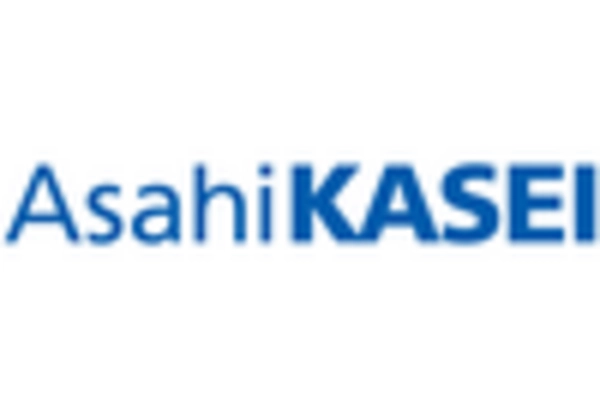Consumer Awareness
The rising consumer awareness regarding the environmental impact of materials is becoming a significant driver for the Polytetrahydrofuran Market. As consumers increasingly prioritize sustainability in their purchasing decisions, the demand for eco-friendly products is surging. Polytetrahydrofuran, with its biodegradable properties, is well-positioned to meet this growing consumer preference. Market Research Future indicates that approximately 70% of consumers are willing to pay a premium for sustainable products, which could translate into substantial growth for the Polytetrahydrofuran sector. This heightened awareness not only influences consumer behavior but also encourages manufacturers to innovate and adopt sustainable practices, thereby further propelling the market.
Regulatory Support
Regulatory support for the use of bio-based and sustainable materials is likely to bolster the Polytetrahydrofuran Market. Governments worldwide are implementing policies that encourage the adoption of environmentally friendly materials, which could lead to increased investments in Polytetrahydrofuran production. For instance, initiatives aimed at reducing plastic waste and promoting biodegradable alternatives are expected to create a favorable environment for Polytetrahydrofuran. By 2025, it is projected that regulatory frameworks will drive a 20% increase in the adoption of bio-based polymers, including Polytetrahydrofuran, across various sectors. This regulatory landscape not only supports market growth but also enhances the competitive positioning of Polytetrahydrofuran.
Diverse Applications
The diverse applications of Polytetrahydrofuran are emerging as a crucial driver for the Polytetrahydrofuran Market. This polymer is utilized in a wide range of sectors, including automotive, textiles, and adhesives, which contributes to its growing demand. In 2025, the automotive sector alone is anticipated to account for over 30% of the total Polytetrahydrofuran consumption, driven by the need for lightweight and durable materials. Furthermore, the textile industry is increasingly adopting Polytetrahydrofuran for its elasticity and resilience, further diversifying its application portfolio. This versatility not only enhances market resilience but also positions Polytetrahydrofuran as a preferred choice across various industries.
Sustainability Initiatives
The increasing emphasis on sustainability initiatives appears to be a pivotal driver for the Polytetrahydrofuran Market. As industries strive to reduce their carbon footprints, the demand for eco-friendly materials is on the rise. Polytetrahydrofuran, known for its biodegradability and lower environmental impact compared to traditional polymers, is gaining traction. In 2025, the market for sustainable materials is projected to reach approximately 150 billion USD, with a notable portion attributed to bio-based polymers like Polytetrahydrofuran. This shift towards sustainability not only aligns with regulatory pressures but also resonates with consumer preferences for greener products, thereby enhancing the market's growth potential.
Technological Advancements
Technological advancements in polymer production processes are likely to significantly influence the Polytetrahydrofuran Market. Innovations such as improved catalytic processes and enhanced polymerization techniques are facilitating the production of high-quality Polytetrahydrofuran with superior properties. For instance, the introduction of continuous production methods has the potential to reduce manufacturing costs and increase output efficiency. As of 2025, the market for advanced polymer technologies is expected to grow at a CAGR of around 8%, indicating a robust demand for innovative solutions in the Polytetrahydrofuran sector. These advancements not only enhance product performance but also expand the application scope of Polytetrahydrofuran in various industries.

















Leave a Comment